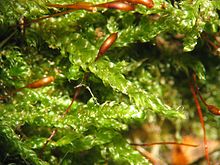
Funaria is a genus of approximately 210 species of moss. Funaria hygrometrica is the most common species. Funaria hygrometrica is called “cord moss” because of the twisted seta which is very hygroscopic and untwists when moist. The name is derived from the Latin word “funis”, meaning "a rope". In funaria root like structures called rhizoids are present.
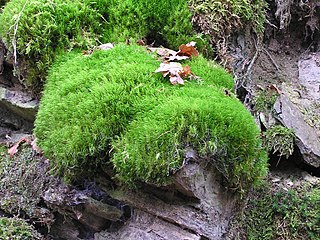
Dicranaceae is a family of haplolepideous mosses (Dicranidae) in class Bryopsida. Species within this family are dioicous. Genera in this family include Dicranum, Dicranoloma, and Mitrobryum.

Grimmia is a genus of mosses (Bryophyta), originally named by Jakob Friedrich Ehrhart in honour of Johann Friedrich Carl Grimm, a physician and botanist from Gotha, Germany.

Barbula is a genus of mosses in the family Pottiaceae.

Ditrichum is a genus of haplolepideous mosses (Dicranidae) in the family Ditrichaceae.
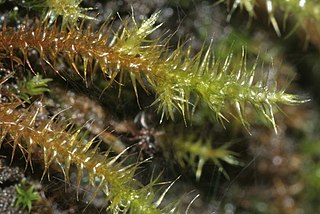
Amblystegiaceae is a family of mosses. It includes 20 to 30 genera with a total of up to 150 species. They occur nearly worldwide, growing in tropical, temperate, and subpolar regions.

Taxiphyllum is a genus of mosses in the family Hypnaceae.

Thuidium is a genus of moss in the family Thuidiaceae. The name comes from the genus Thuja and the Latin suffix -idium, meaning diminutive. This is due to its resemblance to small cedar trees.

Syntrichia is a large, cosmopolitan genus of mosses in the family Pottiaceae. The genus name is of Greek origin for "plus" and "hair", referring to the "twisted peristome united by a basal membrane".

Didymodon is a genus of mosses belonging to the family Pottiaceae. The genus has a cosmopolitan distribution.

Homomallium is a genus of moss belonging to the family Hypnaceae.

Plagiothecium is a genus of moss belonging to the family Plagiotheciaceae. It has a cosmopolitan distribution.

Homalothecium is a genus of mosses belonging to the family Brachytheciaceae.
Vesicularia is a genus of mosses belonging to the family Hypnaceae.
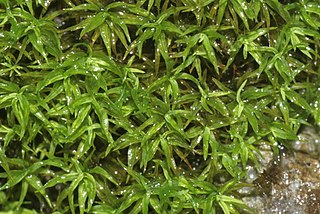
Trichostomum is a genus of mosses belonging to the family Pottiaceae.
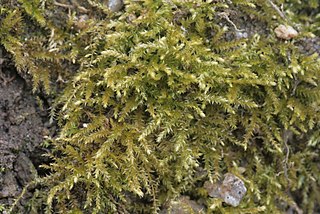
Oxyrrhynchium is a genus of mosses belonging to the family Brachytheciaceae. The genus has a cosmopolitan distribution.
Pylaisia is a genus of mosses belonging to the family Pylaisiaceae.
Herzogiella is a genus of mosses belonging to the family Hypnaceae.

Plagiotheciaceae is a family of mosses from the order Hypnales. It is found almost nearly worldwide, including Antarctica. Located primarily in temperate latitudes and at higher elevations in the tropics.
